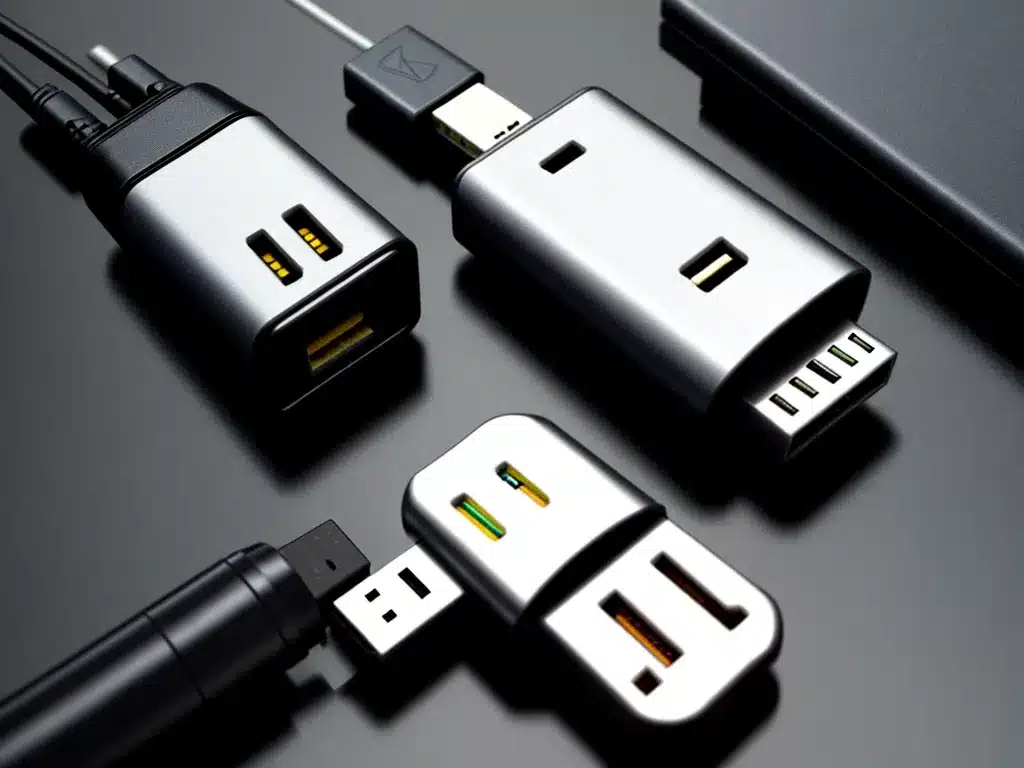Symptoms of a Faulty USB Port
USB ports allow us to connect peripherals like mice, keyboards, printers, and external storage devices to our computers. However, USB ports can sometimes stop working properly. Here are some common symptoms of a faulty USB port:
- Devices not being recognized when plugged into the port. The computer will not detect the device.
- Devices disconnecting or reconnecting randomly. The connected device will drop off and reconnect repeatedly.
- Devices charging slowly or not at all. If it is a USB charging port, it may charge devices slowly or not charge them.
- Corrupted data transfer. Data copied to external storage devices may become corrupted.
- The USB port is physically damaged. You may see damage, melted plastic, or scorch marks around the USB port.
If you notice any of these symptoms, it likely indicates an issue with the USB port that needs troubleshooting.
Potential Causes of a Faulty USB Port
A USB port can stop working due to several possible causes:
- Loose connections. The USB cable may not be fully plugged into the port. Connections inside the port may have come loose.
- Damaged ports. Physical damage, liquid spills, debris stuck in the port, or electrostatic discharge can damage the port.
- Driver issues. Outdated, buggy, or corrupted USB drivers can prevent proper function.
- Power issues. Insufficient power delivery over the USB port may cause connectivity problems.
- Hardware failure. The USB port itself or related components on the motherboard may have failed.
The most common causes are loose connections, damaged ports, and driver problems. But improper power delivery and complete hardware failure can also occur.
Troubleshooting Steps
Here are some steps to systematically troubleshoot and try to fix a faulty USB port:
1. Visually Inspect the Port
Closely look at the USB port. Check for any debris like dust or lint inside the port. Look for physical damage to the port or melted plastic. If the port is visibly damaged, the entire USB port may need replacement.
2. Try Another USB Device
Try plugging in different USB devices like a mouse, flash drive, or phone cable. See if the issue persists across multiple devices. Narrow down if the problem is with the port or the original device.
3. Test on Another USB Port
Test the device on another USB port on the same computer. If it works fine on the second port, then the original USB port is likely faulty.
4. Update USB Drivers
Outdated USB drivers can cause connection issues. Update your USB drivers to the latest available version. For Windows, search for Device Manager, find your USB ports, and update the drivers.
5. Reconnect the USB Cable
Disconnect and reconnect the USB cable firmly into the problematic port. Make sure it is plugged in all the way. A loose connection can cause intermittent issues.
6. Toggle USB Suspend Setting
For laptops, toggle the USB suspend setting in Power Options to prevent the port from powering down. Right click the Windows Start menu > Power Options > Change plan settings > Change advanced power settings. Expand the USB settings and disable USB selective suspend.
7. Clean out the Port
Use compressed air to spray out any dust or debris in the USB port. Lint and particulates can prevent proper contact. Avoid moisture and flammable sprays.
8. Check for Hardware Damage
Visually inspect the hardware inside the USB port using a flashlight. Look for bent pins, dislodged connectors, burnt circuitboard traces, or frayed/broken wires. Physical damage may require port replacement.
9. Replace USB Port
If no other troubleshooting works, the USB port itself or related hardware may need replacement. This requires soldering work and should be done by an experienced technician.
Preventing USB Port Damage
Here are some tips to avoid damaging your USB ports in the day-to-day use:
- Remove USB devices carefully without yanking the cable abruptly.
- Do not plug in devices with bent connector pins.
- Keep ports free of dust and debris using compressed air.
- Avoid spilling liquids on the ports.
- Only use chargers with the rated output voltage to avoid overheating.
- If a port is loose, have it repaired instead of ignoring it.
- Replace damaged ports as soon as possible to avoid short circuits.
Following good USB port care and hygiene will minimize the chances of port failure. But over years of use, the ports can eventually fail and need replacement. With the right troubleshooting steps, many issues are fixable or at least diagnosable before that replacement is necessary.













